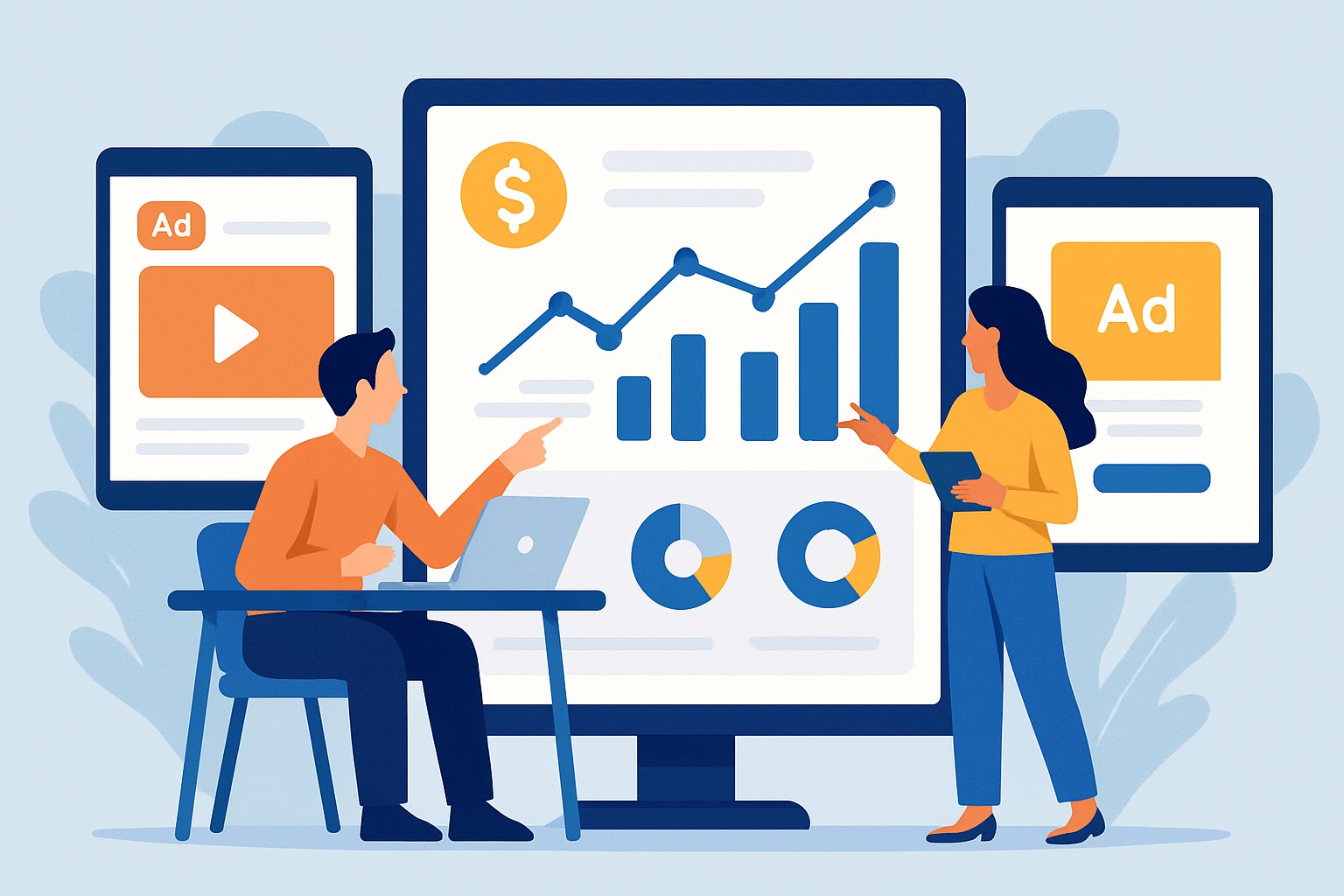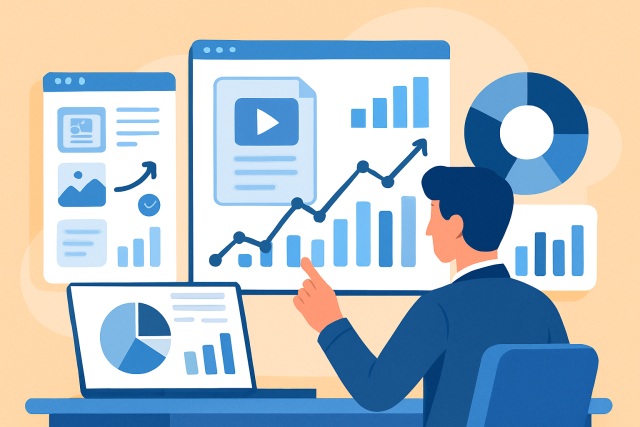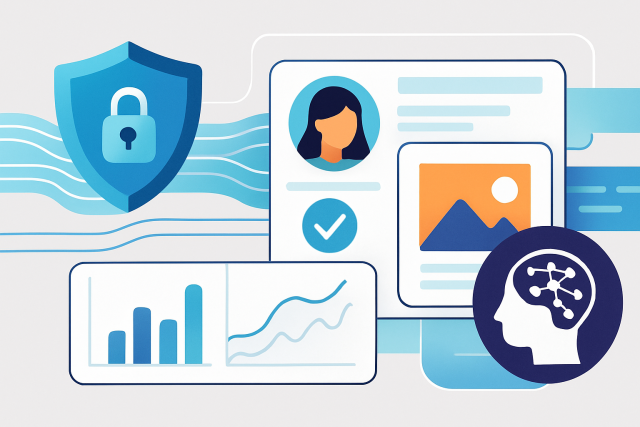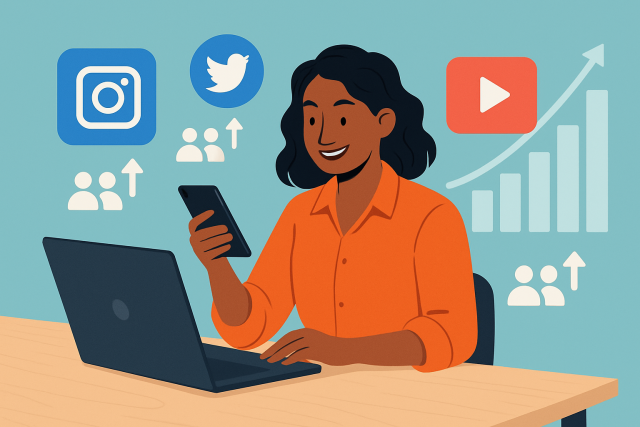Paid Media Platforms That Drive Real Results


Paid media plays a starring role in today’s content marketing strategies by giving brands the ability to zero in on specific audiences quickly and with real impact. Unlike organic approaches paid media offers clear measurable results that businesses can track and build upon. This detailed guide unpacks the basics of paid media and dives into how it drives real business outcomes. It also shines a light on the top platforms marketers swear by. You’ll get solid advice on picking the right platforms, crafting campaigns that click, keeping an eye on performance and troubleshooting common hiccups.
What Does Paid Media Mean? A Basic Introduction That’s Easy To Grasp
Paid media is any marketing effort where you pay to use a third-party platform to push your content, products, or services into the spotlight. Unlike owned media like your website or blog and earned media from organic shout-outs and shares, paid media acts like a fast track to ramp up exposure and drive traffic quickly by snapping up ad space or impressions.
- Paid Search Ads like Google Search Ads catch intent-driven queries right when they happen making sure you’re in the right place at the right time
- Social Media Advertising on popular platforms like Facebook, Instagram, LinkedIn and TikTok lets you tap into vibrant communities where your audience already hangs out
- Display Advertising involves eye-catching banner and video ads across various websites helping you stay visible without being too pushy
- Influencer Sponsorships give brands the chance to team up with creators who genuinely connect with their followers—think of it as word-of-mouth on steroids
- Native Advertising is crafted to blend in naturally with editorial content so it feels like a seamless part of the experience rather than an interruption
- Programmatic Advertising leverages AI to handle the heavy lifting of buying and targeting media automatically freeing you up to focus on strategy
- Retargeting ads gently nudge users who’ve already shown interest in your brand giving them a friendly reminder just when they might need it most
How Paid Media Can Actually Give Your Business a Genuine Boost
Paid media can turbocharge your brand visibility and usually brings in qualified leads that become paying customers. By focusing on your target audience, it speeds up conversions and boosts sales while giving you a clear view of your return on investment—no more guessing games. Research shows businesses using paid media acquire customers up to three times faster and enjoy noticeable revenue gains compared to relying only on organic methods.
"> Investing in paid media has shifted from a nice-to-have to an absolute must these days. The real kicker, though, is the never-ending hustle of optimization. The more you roll up your sleeves and dive into tweaking your campaigns, the better your results usually get—your bottom line will thank you for the effort." — Jane Pearson, Digital Marketing Strategist"
Top Paid Media Platforms Taking a Closer Look at What Makes Them Tick
The paid media landscape today is a bustling marketplace packed with platforms offering a dazzling array of channels and targeting options. Marketers frequently tap into search intent and social interests or professional profiles and programmatic reach to strike a chord with their ideal audiences.
- Google Ads is the heavyweight champ of search and display advertising that almost everyone knows
- Facebook Ads offer a vast social media playground with targeting so precise it is like having a marketing sniper
- LinkedIn Ads are the go-to choice for reaching sharp B2B and professional crowds without missing a beat
- Twitter Ads are great for catching real-time buzz and lighting up brand conversations. Think of it as the water cooler of the internet
- TikTok Ads hook the younger crowd with creative video formats that keep viewers glued
- Pinterest Ads are your best friend for visual discovery and perfect for sparking fresh ideas and inspiring product dreams
- Programmatic DSPs are behind-the-scenes wizards that offer automated buying and access to a wide audience
Google Ads The Undisputed Champion of Search Engine Advertising
Google Ads offers advertisers a neat mix of ad formats to pick from. You have search ads that appear in Google’s search results, display ads running across partner websites, video ads on YouTube, and shopping ads that highlight products. Its advanced targeting tools include keywords, location, device, audience demographics, and remarketing. These make it a solid choice for campaigns focused on user intent and tracking measurable conversions.
Facebook (Meta) Ads Fueling Your Success in the Ever-Changing World of Social Media Marketing
Meta Ads span across both Facebook and Instagram and deliver a smorgasbord of ad formats from eye-catching images and engaging videos to carousels and stories that really grab attention. They’ve got audience targeting down to a fine art and let you zero in based on interests, behaviors, demographics and custom lookalike groups.
LinkedIn Ads Mastering the Art of B2B Paid Media
LinkedIn Ads is often hailed as the go-to paid media platform for B2B marketers who want to connect with professionals and key decision-makers in niche industry sectors. Ad formats like Sponsored Content, Sponsored InMail and Text Ads offer plenty of targeted options based on job title, company size, industry, seniority and skills—giving marketers a neat toolbox to work with. This precise targeting makes LinkedIn a natural fit for lead generation, account-based marketing and reaching high-value prospects within professional networks.
Emerging Platforms That Are Gaining Ground Around Twitter, TikTok, Pinterest, and Programmatic DSPs
Alongside the big players, newer channels like Twitter bring fresh opportunities for real-time back-and-forth that make interactions feel more lively. Meanwhile, TikTok draws in the younger crowd with its addictive viral videos that keep popping up everywhere. Pinterest carves out its niche with a strong focus on visual product discovery — perfect for those who love to browse with their eyes first. Then there are programmatic DSPs (Demand Side Platforms) that give marketers the keys to vast networks and let AI do the heavy lifting when it comes to targeting.

An overview collage showcasing dashboards and interfaces of leading paid media platforms.
Finding the Best Paid Media Platform for Your Business (Without Losing Your Mind)
Choosing the right paid media platform often boils down to your industry and who you’re trying to reach. It also depends on what you want to achieve, your budget and the creative assets in your toolkit.
| Platform | Audience Reach | Best Use Cases | Cost Structure | Strengths | Limitations |
|---|---|---|---|---|---|
| Google Ads | Billions worldwide | High-intent searches, e-commerce | CPC, CPM, CPA | Massive reach with pinpoint intent-based targeting that really gets to the heart of what users are searching for | Fiercely competitive landscape, definitely not for the faint of heart without solid keyword expertise |
| Facebook Ads (Meta) | 2.9 billion monthly users | Social engagement, brand awareness | CPC, CPM, CPA | Sophisticated targeting options plus a smorgasbord of ad formats to play with | Privacy changes have thrown a bit of a wrench into targeting accuracy lately |
| LinkedIn Ads | Over 850 million professionals | B2B lead generation, professional services | CPC, CPM | Laser-focused professional audience targeting that really lets you zero in | Typically comes with a steeper price tag per click, so budget carefully |
| Twitter Ads | 450 million users | Real-time campaigns, brand personality | CPC, CPM, CPA | Great for catching audiences in the moment with a conversational, witty ad style | Smaller crowd compared to others, and targeting details aren’t as rich |
| TikTok Ads | More than 1 billion active users | Youth-focused marketing, viral videos | CPC, CPM | Fantastic viral potential with creative video options that can really make your brand pop | Mostly a hit with younger demographics, so not your go-to for all audiences |
| Pinterest Ads | 450 million users | Visual products, inspiration-driven shopping | CPC, CPM | A strong pick for e-commerce conversions, especially if your product is a feast for the eyes | Not the best fit for B2B efforts, tends to skew consumer-centric |
| Programmatic DSPs | Access to billions of users | Large-scale audience targeting, retargeting | CPM, CPC | Automated, AI-powered ad buying that can save you time and deliver scale | Can quickly get complex and often demands specialist skills to manage effectively |
Developing Paid Media Campaigns That Actually Work with Smart Strategies and Best Practices You Can Count On
Successful paid media campaigns call for careful planning that lines up perfectly with clear marketing goals and specific KPIs. Every step—whether it is nailing down the audience, setting the budget just right, crafting a resonant message or picking the platforms to run on—plays a key role in how well the campaign eventually performs.
Clearly nail down your campaign goals—whether you are aiming to boost brand awareness, reel in new leads or drive those all-important direct sales.
Dive deep into audience research to understand their demographics and behaviors.
Plan your budget with care, spreading it thoughtfully across platforms and formats to get the best return because every dollar counts.
Whip up engaging assets like ad copy, visuals and calls-to-action, making sure each one fits the channel it’s headed for.
Set up your campaign structure within each platform, fine-tuning targeting, bidding and placements like a pro.
Keep a close eye on performance and analyze the data regularly. Don’t be shy about tweaking your targeting, creatives and bids as the situation evolves.
Best practices usually boil down to fine-tuning audience targeting with data, crafting ad copy that is clear and compelling, using smart bidding strategies to control costs, running A/B tests to focus on what clicks, and setting frequency caps to avoid ad fatigue.
The Key Metrics and Analytics That Really Matter for Paid Media
Marketers size up paid media effectiveness by keeping an eye on various metrics that reveal how impressions are landing and how users are interacting. Of course, they also watch the bottom line. These numbers don’t just sit there—they provide key insights into campaign performance and help steer tweaks that boost cost efficiency and rope in more conversions.
- Click-Through Rate (CTR) reflects the ratio of clicks to impressions, giving you a solid idea of how relevant and engaging your ads really are. Think of it as your ad’s popularity contest score.
- Cost-Per-Click (CPC) indicates the average amount you shell out for each click, which is a handy way to keep tabs on how efficiently your budget is being put to work.
- Cost-Per-Acquisition (CPA) shows the cost involved in actually landing a conversion or sale.
- Return on Ad Spend (ROAS) measures the revenue you bring in for every dollar you spend on advertising. It’s like checking your investment’s report card.
- Conversion Rate looks at the percentage of users who take the desired action after clicking your ads. It’s where the magic happens, turning clicks into real results.
- Impression Share reveals the slice of total available impressions your ads snag, offering a peek at how you stack up against the competition in the ad game.
Typical Challenges You Might Face and How to Tackle Them Like a Pro
Marketers often run into headaches like ad fatigue that tanks performance and burning through budgets because of sloppy spending. They also face off-base targeting that wastes precious impressions and the tricky business of figuring out exactly where conversions come from across various channels.
"The key to lasting success in paid media lies in consistently learning and adapting on the fly. Catching those early warning signs of declining returns and pivoting your tactics quickly is what usually keeps campaigns not just effective but running like a well-oiled machine." — Marco Diaz, Paid Media Consultant
Looking Ahead at Trends in Paid Media Platforms What’s on the Horizon?
Paid media is evolving rapidly as AI-powered ad targeting gets sharper and delivers results that feel almost like magic—precise and automated. Meanwhile, privacy rules are shaking things up by changing how data is handled and how we measure ads. This keeps everyone on their toes. Connected TV ads are booming and unlocking new streaming audiences that marketers are eager to tap into.

Visualization of future paid media trends including AI targeting, privacy enhancements, and connected TV advertising.
Getting Started With Your Paid Media Action Plan Let’s Dive In
Kicking off your first or next paid media campaign typically starts with a solid plan that covers everything from diligent research and setting clear goals to budgeting and crafting content. It also involves keeping a close eye on how things unfold.
Understand where they hang out online and what kind of messages truly resonate with them.
Pick paid media platforms that not only align with your goals but also match how your audience prefers to use them. It’s a bit like choosing the right fishing spot for the catch you want.
Set clear, specific campaign objectives and KPIs that give you a real sense of how things are progressing.
Figure out a realistic budget and spread it thoughtfully across your chosen platforms so you’re not wasting money to see what works.
Create engaging ad creatives that are tailor-made for each platform and designed to spark interaction rather than just blend into the background.
Launch your campaigns and keep a close eye on those early performance signals. Sometimes the first signs are the ones that save the day.
Continuously refine your campaigns based on the data you collect, and keep your stakeholders regularly informed. Keeping everyone in the know builds trust and maintains momentum.




